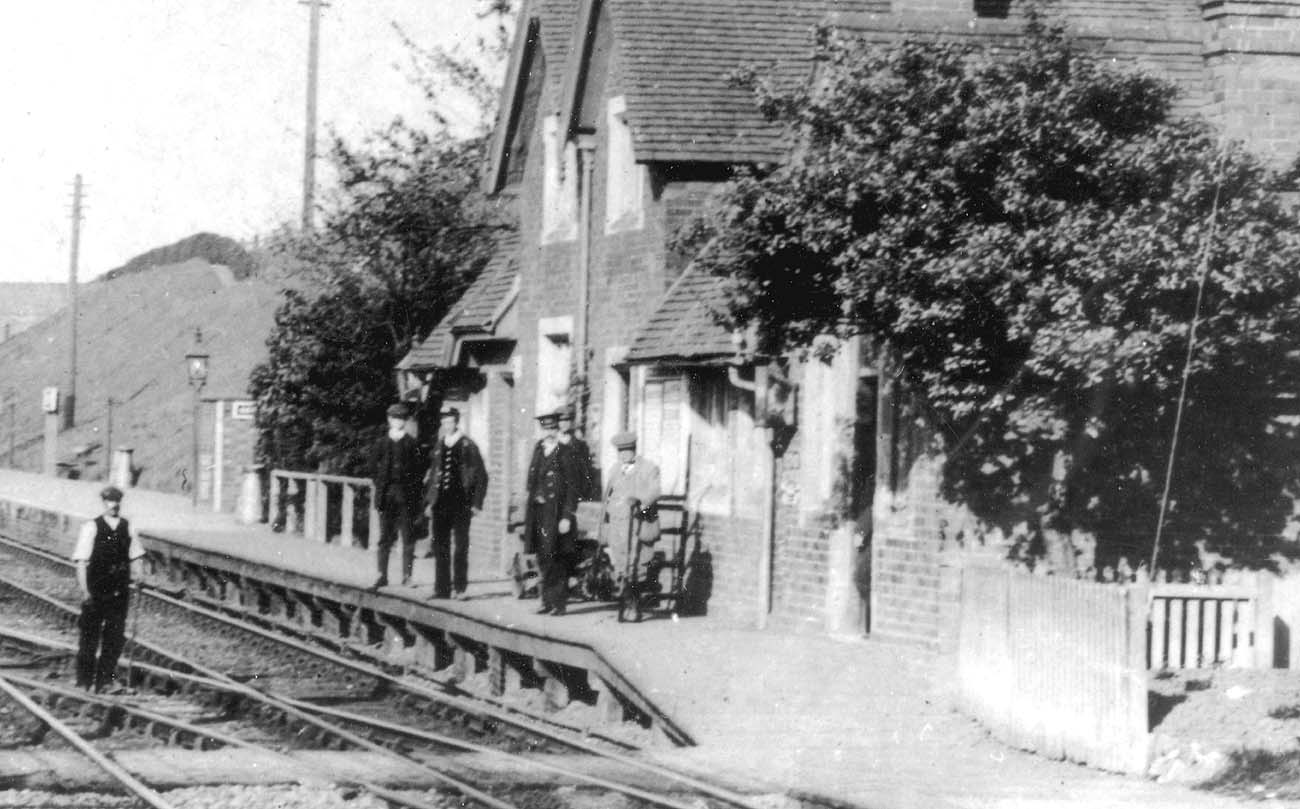|
|
 |
 |
|
London North Western
Railway:

Midland
Railway:

Stratford
Midland Junction Railway
|

|
LMS Route: Rugby to Leamington Spa (Avenue)
Marton Station: lnwrmart3100a
 |
Close up of image 'lnwrmart3100' showing the timber platform
and railway staff and passengers posed for the camera. The platelayer is
standing in the six foot (the space between the two sets of tracks) holding a
long handle sledge hammer. Porter-Signalman Thomas Baker (see image 'lnwrmart3576') can been on the platform, the second
from the left. The term 'platelayer' had its origins in pre-steam days when
'plateways' were built using L shaped rails and the vehicles which ran on them
did not have flanged wheels. Essentially this was to overcome the problem
encountered by road vehicles running on roads which were not much better than
mud tracks. Eventually, around 1830, with the coming of heavier engines and
wagons, plateways gave way to edged rails and flanged wheels. Plateways were
less able to carry the increased weights, and L shaped rails were prone to
wear. With the coming of the first railroad (this was originally a British term
before becoming primarily associated with American railways) the word
'platelayer' continued to be used to describe those workers. 'Ganger' is a term
used to describe the person who would be in charge of a 'gang' of platelayers
(and is still in use to day across many construction sites). On the right the
point rodding from the signal box to the points controlling access from the
down line to the goods yard are protected by a timber 'tunnel'.
 back back

|
|
|
